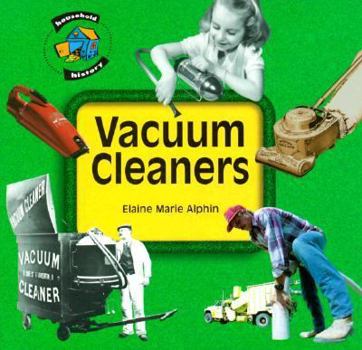Vacuum Cleaners
Select Format
Select Condition 
Book Overview
Discusses the history and technical development of the vacuum cleaner, from the first carpet sweepers of the nineteenth century to twentieth-century improvements. This description may be from another edition of this product.
Format:Hardcover
Language:English
ISBN:1575050188
ISBN13:9781575050188
Release Date:January 1997
Publisher:Carolrhoda Books
Length:48 Pages
Weight:0.63 lbs.
Dimensions:0.4" x 8.6" x 7.9"
Age Range:8 to 9 years
Grade Range:Grades 3 to 4
Customer Reviews
2 ratings
How we got from brooms to cordless dustbusters!
Published by Thriftbooks.com User , 17 years ago
Gravity pulls out all kinds of dust from the air, and lots of it gets into your house, with the potential of causing illness! As you would guess by the title of Elaine Marie Alphin's book, a vacuum cleaner is the best way to remove all that dust, and Vacuum Cleaners is the best way to learn all about how those gismos work, and the history of making them! Brooms only seemed to move dust from one place to another, so some smart housekeepers started dipping their brooms in water to improve the performance of the tool. Something much more was needed, and this slim volume details the history of that progress with lots of entertaining photos, drawings and cartoons. Scientific and cultural aspects of this invention are examined, and a glossary is provided for review. For the ambitious, the author provides instructions to make a simple vacuum cleaner, but the Hoover company need not fear the impact of this activity on business! This is a fun read for kids, but adults will love it too. I suspect that young readers will suddenly feel motivated to help out with the housework after reading this book!
All Hail The Aspiradora!
Published by Thriftbooks.com User , 20 years ago
"Aspiradora" is the lyrical Spanish word for "vacuum cleaner," one of the rare facts you won't find in Elaine Marie Alphin's excellent book on vacuums for children. Despite the omnipresence of vacuum cleaners in our lives, very little is written about them. This book is an excellent history of vacuum cleaners and their predecessors, brooms, Bissell sweepers, and carpet beaters. The book explains the formation of dust and various methods of removing it from our homes. It also teaches kids about dust mites and allergies, and emphasizes cleanliness. Obviously the accomplishments of the great H. Cecil Booth, the inventor of the first practical vacuum cleaner, and James Murray Spangler, the man who invented the beater bar (although it was originally a rotating brush made of goat hair) are highlighted. Also detailed are the rise of the mighty vacuum industrial giants, Hoover, Kirby, and the Swedish company Aktiebolaget Elektrolux, better known as Electrolux, the first manufacturer of the canister vacuum cleaner with wheels. Many novel vacuum cleaners get mention, including bellows powered models, and one powered by coal. The book discusses current technology vacuum cleaners including dustbusters, "bugvacs," a French animal refuse vacuum, and a vacuum cleaner specifically designed to vacuum prairie dogs out of their holes on ranch land. The book adds excited mention of the Hoover Historical Center in North Canton, Ohio, a museum devoted to vacuum cleaners, with over 100 on display. Finally, the book has step by step directions for kids to follow to make their own vacuum cleaner. It also has a glossary and index, which is extremely rare in a book of this kind. This is the best book for teaching children about vacuum cleaners, or possibly about household appliances in general. It is well illustrated, and stresses the importance of cleanliness and helping parents with chores (obviously including vacuuming.) I recommend this book for parents of kids curious about machines in general and vacuum cleaners in particular.






